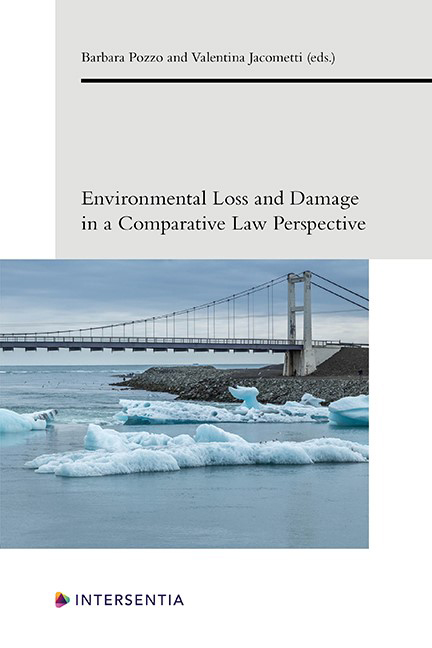Book contents
- Frontmatter
- Preface
- Contents
- List of Authors
- PART I LIABILITY FOR ENVIRONMENTAL HARM IN THE EU
- PART II PRIVATE AND CORPORATE ENVIRONMENTAL LIABILITY
- PART III THE ROLE OF CRIMINAL LIABILITY
- PART IV LEGAL TRANSPLANTS IN THE ENVIRONMENTAL FIELD: THE CASE OF ENVIRONMENTAL LIABILITY
- PART V STATE AND INTERNATIONAL ENVIRONMENTAL LIABILITY
- PART VI CLIMATE CHANGE LIABILITY
- PART VII LIABILITY, CLIMATE CHANGE AND NATURAL HAZARDS: THE ROLE OF INSURANCE
- PART VIII REAL COMPENSATION AND OFFSET REGIMES: THE STRATEGY OF “NO NET LOSS”
- About the Editors
The Burden of Proof in Proceedings for Corrective and Preventive Actions in Polish and Italian Law
Published online by Cambridge University Press: 26 May 2021
- Frontmatter
- Preface
- Contents
- List of Authors
- PART I LIABILITY FOR ENVIRONMENTAL HARM IN THE EU
- PART II PRIVATE AND CORPORATE ENVIRONMENTAL LIABILITY
- PART III THE ROLE OF CRIMINAL LIABILITY
- PART IV LEGAL TRANSPLANTS IN THE ENVIRONMENTAL FIELD: THE CASE OF ENVIRONMENTAL LIABILITY
- PART V STATE AND INTERNATIONAL ENVIRONMENTAL LIABILITY
- PART VI CLIMATE CHANGE LIABILITY
- PART VII LIABILITY, CLIMATE CHANGE AND NATURAL HAZARDS: THE ROLE OF INSURANCE
- PART VIII REAL COMPENSATION AND OFFSET REGIMES: THE STRATEGY OF “NO NET LOSS”
- About the Editors
Summary
THE BURDEN OF PROOF: DEFINITION AND IMPORTANCE IN PROCEEDINGS
The fundamental term that must first be explained in this chapter is “burden of proof ”. The term is a borrowing from the German legal terminology, not only differing from the Latin term onus probandi, but also, particularly, from its statutory definition adopted in Article 6 of the Polish Civil Code, which mentions the burden of proving a fact. This term [i.e. burden of proof], is easier to communicate. It is undoubtedly a shortcut (simplification) but, since people have used it so commonly in legal language for such a long time, “it became a statutory term in the end … Thus, it is not a mistake to use it”.
In the theory of law, the burden of proof is associated with the application of the law. The application of the law is defined as “making binding and specific legal decisions by a competent state authority pursuant to the generally binding legal norms”. On the other hand, Stawecki and Winczorek, combining the application of the law with burden of proof, indicate that:
The application of law is an action, hence it is a decision-making process which can be split into the following stages:
(1) preliminary establishment of the likelihood of occurrence of a legally significant fact;
(2) proving the occurrence of a fact;
(3) subsumption of the decision;
(4) execution of the decision.
These authors associate the burden of proof with the second stage, that is, proving the occurrence of facts. They argue that, “as a rule, proving a fact to the authorities and providing its description is a responsibility of the person (e.g. prosecution, claimant) who believes that specific legal effects result from (are connected with) such a fact. The rule indicates who is bound to have the so-called burden of proof (onus probandi)”. The principle of burden of proof is expressed by the Latin maxim ei incumbit probatio qui dicit, non ei qui negat (the burden of the proof lies upon him who affirms, not him who denies). However, the rule is subject to certain modifications and it cannot be deemed binding throughout the legal system without reservations and exceptions.
- Type
- Chapter
- Information
- Environmental Loss and Damage in a Comparative Law Perspective , pp. 167 - 178Publisher: IntersentiaPrint publication year: 2021



